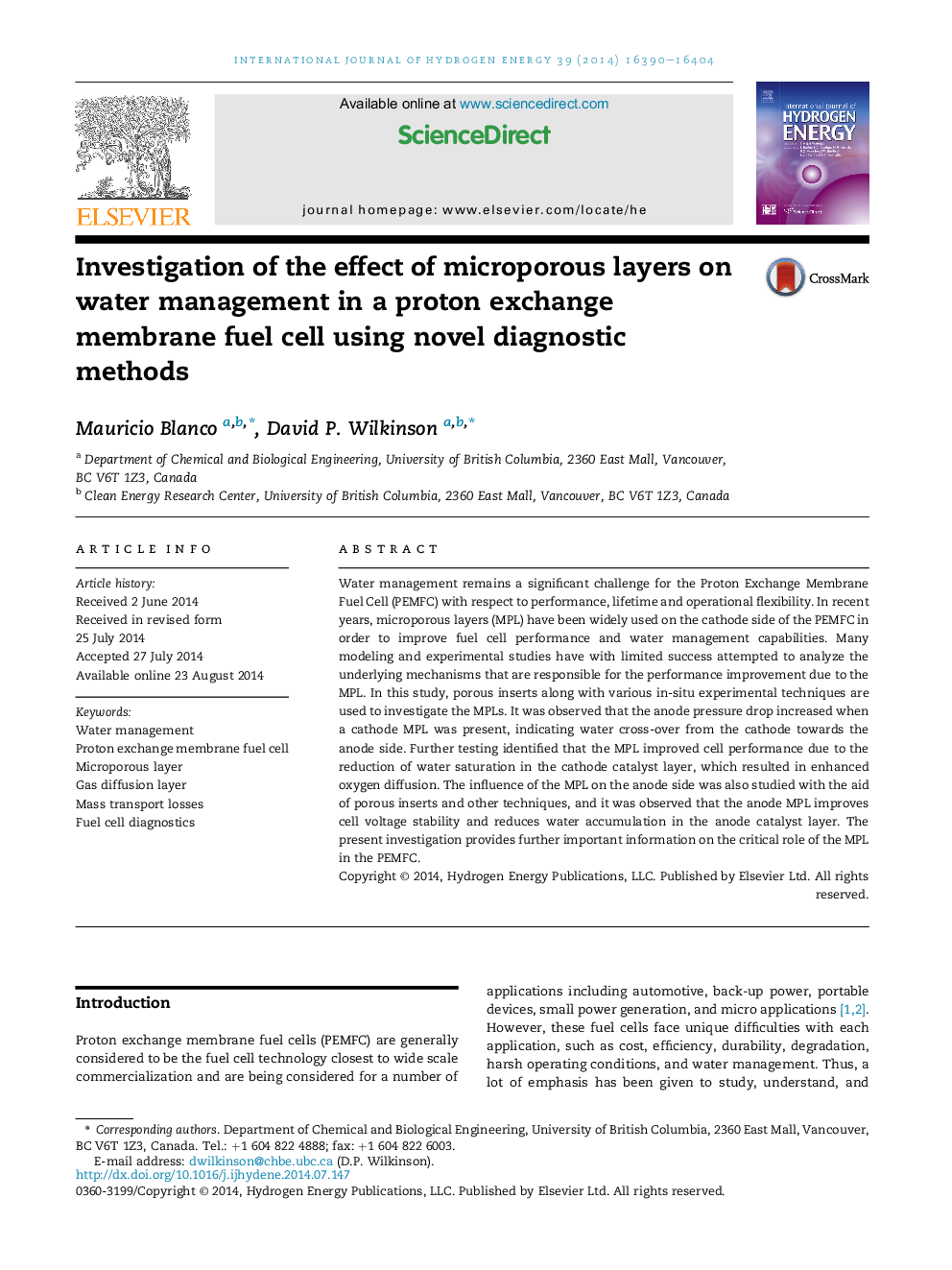| Article ID | Journal | Published Year | Pages | File Type |
|---|---|---|---|---|
| 1280976 | International Journal of Hydrogen Energy | 2014 | 15 Pages |
•A new PEMFC diagnostic using porous inserts is used to investigate water management.•Anode water removal, heliox and pressure drop analysis determine PEMFC water transport.•The cathode MPL improves PEMFC performance from low humidity to flooded conditions.•New insight is gained for the effect of the cathode MPL on PEMFC water transport.•The anode MPL is found to be important for voltage stability and water management.
Water management remains a significant challenge for the Proton Exchange Membrane Fuel Cell (PEMFC) with respect to performance, lifetime and operational flexibility. In recent years, microporous layers (MPL) have been widely used on the cathode side of the PEMFC in order to improve fuel cell performance and water management capabilities. Many modeling and experimental studies have with limited success attempted to analyze the underlying mechanisms that are responsible for the performance improvement due to the MPL. In this study, porous inserts along with various in-situ experimental techniques are used to investigate the MPLs. It was observed that the anode pressure drop increased when a cathode MPL was present, indicating water cross-over from the cathode towards the anode side. Further testing identified that the MPL improved cell performance due to the reduction of water saturation in the cathode catalyst layer, which resulted in enhanced oxygen diffusion. The influence of the MPL on the anode side was also studied with the aid of porous inserts and other techniques, and it was observed that the anode MPL improves cell voltage stability and reduces water accumulation in the anode catalyst layer. The present investigation provides further important information on the critical role of the MPL in the PEMFC.
